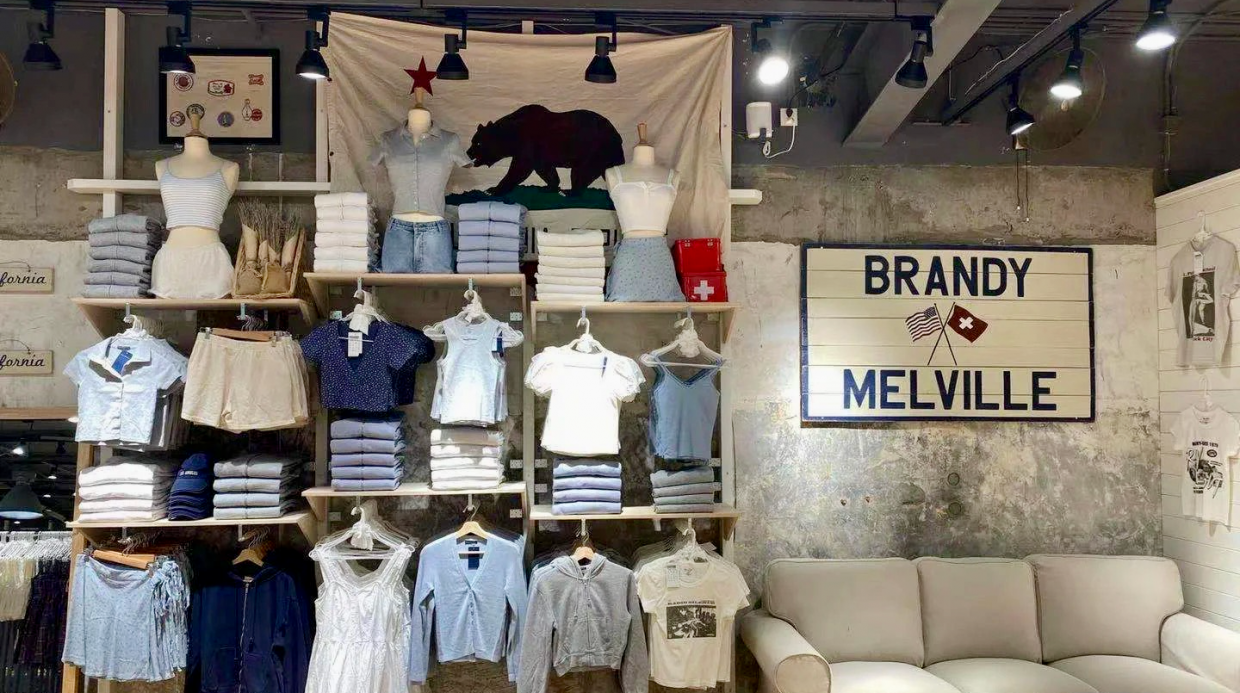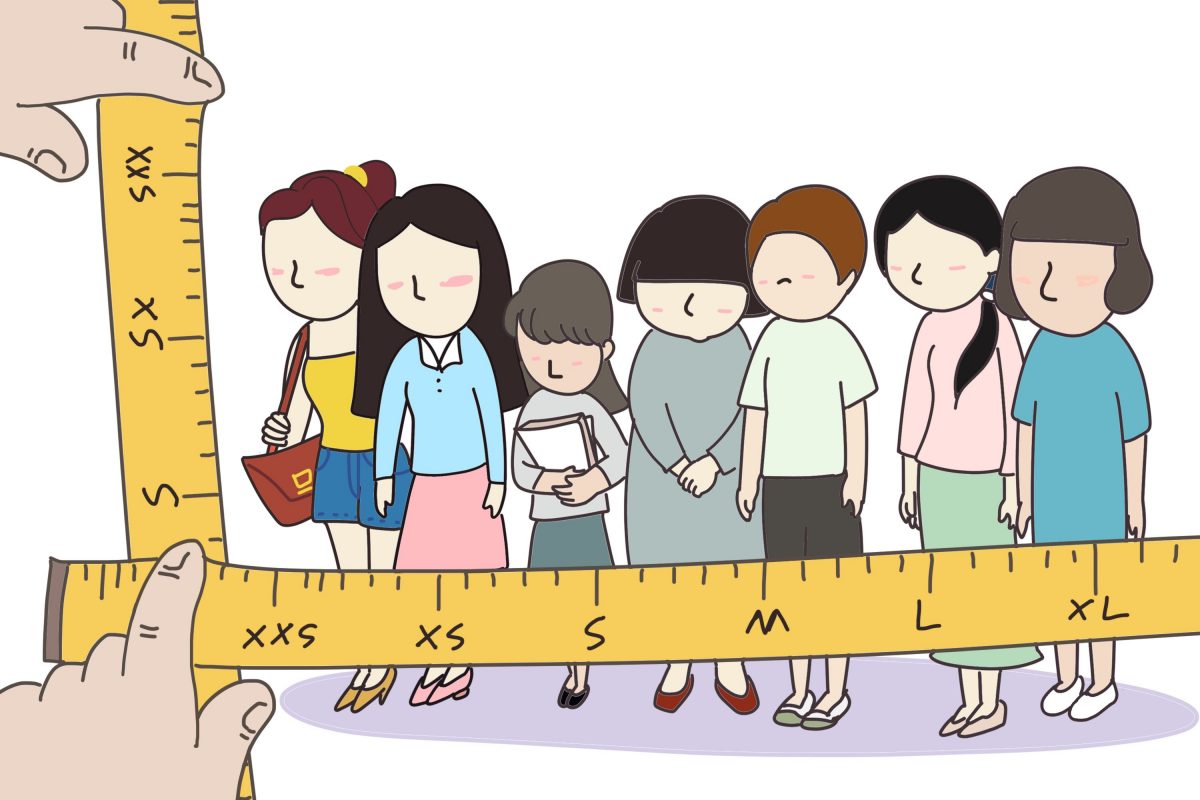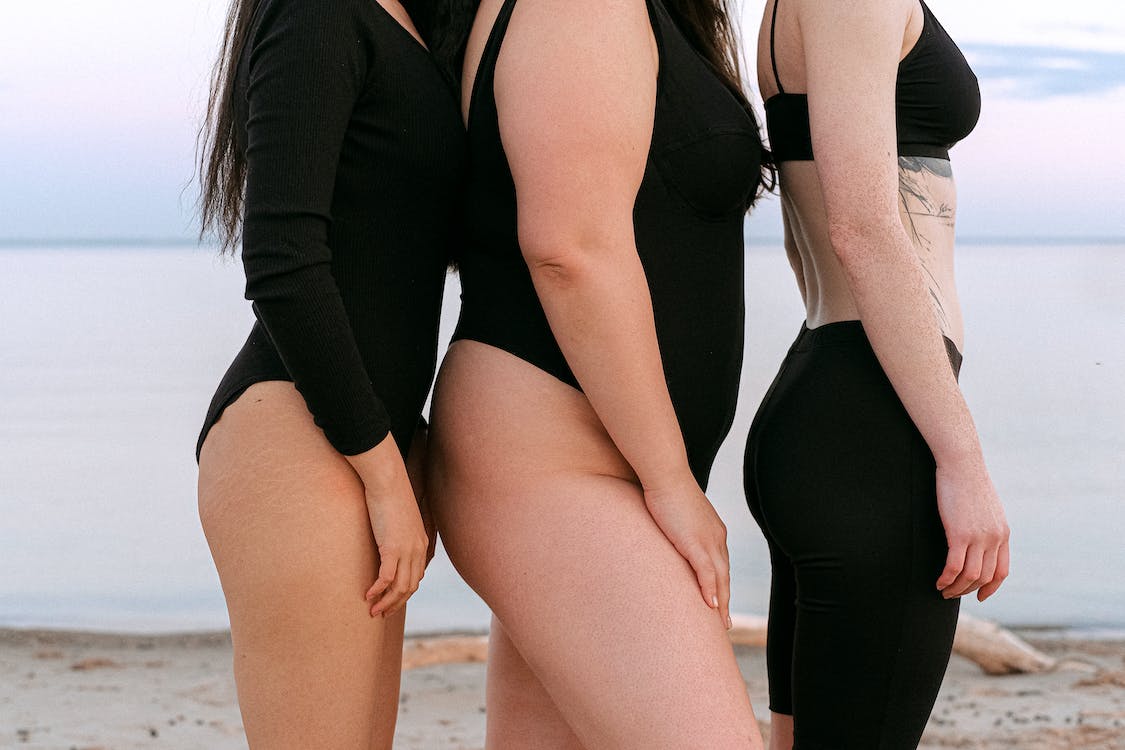Girls! There’s No “One Size”, But “One You”
Why would ladies’ wear keep shrinking?
2023-06-30 by Wendy Lau & Kathy Yin
“ Last time I was like 50kg, can still fit into “S”; today, I weigh less, 40kg, can’t even fit into “M”, what’s happened?”
“ With the body weight only 45.5kg, I can’t find any adult wear to squeeze comfortable into; look like only teenager who weighs 18kg still can. What’s going on?”
Shoppers were stunned by the ever-changing sizes of ladies’ wear.
“Why the ladies’ wear keeps shrinking?” This has become a hot topic over social media in China lately.
Not just the ordinary, even Zhang Xinyu (Viann Zhang), the Chinese model and actor, wrote in social media: “There is a brand, my best-love, but now I can’t even fit in its L-size.” Viann Zhang is 169 cm tall, weighs 51kg – she belongs to small and slim side.

(Zhang Xinyu/Photo: Internet)
The brand Viann Zhang hinted at is speculated to be Chuu, a Korean label for teenagers. “Only a four-year-old toddler can fit into the brand’s short sleeve tee,” a reporter noted.
Where did the idealized “small & slim” come from?
To a certain extent, the popular Gen Z “one-size-fits-all” Italian brand Brandy Melville could not “get away with it”.
“Tight, short, show” – says much about the key features promoted by the brand – this is also what keeps the brand’s sales figures flying over the years. Any teenager girl who can fit into Brandy Melville is labelled “BM girl” – sort of compliment (at least for some people) rather than an unfriendly label.

(Photo: Brandy Melville)
There was a time when the ‘BM trend’ was prevalent on the internet, especially on Xiaohongshu, and some girls were proud to be able to wear the petite clothes such as Brandy Melville or even other children’s clothing.
On a broader level, the aesthetic of thinness as beauty has been around for a long time, in China and around the world. Especially in China, or some Asian countries like Korea or Japan, “fat” has become a word that women will do almost anything to avoid being associated with. People see attractiveness and “white, young, thin” as equal.
But honestly, we are not surprised at all, given that being slim as a beauty ideal has become the subject of countless newspaper stories, TV commercials and movies, resulting in the almost universal correlation between a slim figure and beauty.
The ultra-thin model is the ideal body every young people ever dream of. These one-size-fits-all mentality gets so worse that society gives an odd look to those who can’t call themselves BM girls. This is exactly how the vicious cycle to blind chase for ultra-small size eventually gets started.
How monstrous can it be?
For example, in 2016, there were scores of women shared photos on social media to prove that their waists did not protrude from behind an A4-sized sheet of paper-a “standard” they believed to be the norm.
What’s directive hands behind the shrinking size?
In addition to these perverse aesthetic reasons, there is also the problem of unenforced clothing standards.
In fact, the country has issued official standards for the manufacture of clothing. This standard is a set of measurement indices for the purpose of regulating production and facilitating customer choice. However, as the national standard is not mandatory, garment manufacturers have full discretion in sizing.
Some merchants reflected, the cost of making different sizes will more or less than same, there shouldn’t be any deliberate attempt to limit the size to “S”. But the Small & Slim still dominates the current market trend. To fix the marketing-target at S only, this helps create sales, a much bigger sales figures than brands that carry all sizes.

“Ladies’ wear usually stays in trend for one season only; as long as S is still the hot item, it’s easier to meet the sales target to sell nothing but S.” In business world, profit maximization is always the key to succeed.
Stock-piling items has cost money, in terms of the necessity of logistics and warehousing. If S-size can lead to less inventory and more sales, why not? On the other hand, if S-size decreases cost, that means cheaper price and increased market competitiveness. Again, why not?
Thus, as the petit-size fashion becomes more prevalent, it reveals the spread of a perverse aesthetic mindset that has seriously affected women’s freedom to dress. It has not only created dressing anxiety, but also humiliated women.
What sort of harm can be done by forcing “idealized body-size” upon everyone?
Denise Martz, a professor of psychology at Appalachian State University in North Carolina, US, said that excessive concern can aggravate an impression of poor body shape, cause anxiety and depression, and, more important, could pave the way to eating disorders in extreme cases.
Wang Yiting (a college student from Zhejiang) began this weight-loss program; she cut her daily calorie intake, but to find she would later binge, eating like horse. Months later, she was affected by anorexia.

Besides, the promotion of petite fashion is exclusionary and leaves those who do not conform to smaller sizes feeling inadequate or abnormal, especially when it comes to teenage girls who are still in their formative years.
Just a couple weeks ago, a new documentary told the story of a 15-year-old girl in China who passed away after suffering from anorexia. According to the documentary, the patient started dieting after a boy she liked fell for a skinnier girl. Extreme dieting slowly evolved to the point that she couldn’t keep any food down.
For women, it is important not to cater to this perverse sense of beauty and not to be bound by it.
Should we follow the “bonny & skinny” trend with blind eyes?
Maybe it’s time to rethink about if this narrow concept: skinny and bony means beautiful.
Should there just one-single standard to measure beauty? Aren’t we all paying a high price just to squeeze into this one-size-fits-all? When can we stop judging a book by its cover? What if we all forget the old stale standard, but truly enjoy a new life re-defined by “health, confidence, and cheer”?

The aesthetics of society are never static, but change as society changes. From this perspective, the pursuit of “white, young and thin” is in fact a choice at this stage in history. I.e., it is a citizen’s right to pursue the kind of body they want.
However, what is abnormal is that some businesses and manufacturers are desperately trying to promote petit fashion, deliberately advocating that the thinner you are, the more beautiful you are, and making a big deal out of clothing. Such a pathological view of aesthetics has misled women in general and is highly undesirable.
So, girls, be whoever you want to be.


